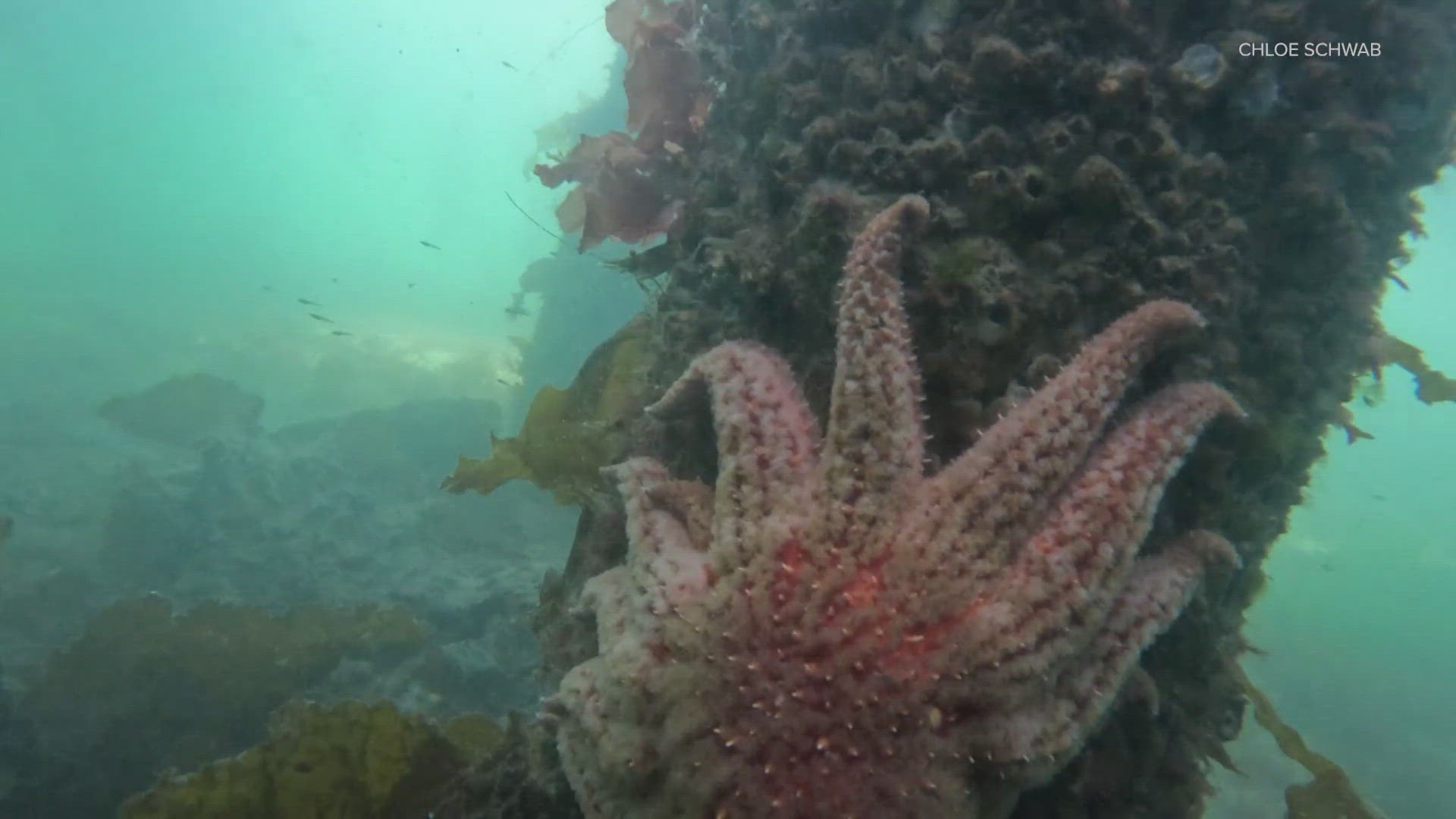FRIDAY HARBOR, Wash. —
University of Washington scientists continue to take steps toward replenishing the sea star population, a species that was wiped out along the West Coast more than a decade ago.
The scientists spent years growing sunflower sea stars in a lab and then released them into the wild. Now, one year into observations of the lab-grown sea stars in the wild, the scientists say progress is being made for the long-term plan.
Sea stars were a common sight along Pacific beaches from Alaska to Mexico until 2014, when disease killed most, apart from small populations in Washington and into British Columbia.
Jason Hodin, a research scientist at the University of Washington’s Friday Harbor Lab, was tasked with figuring out if it’s possible to grow sea stars in a lab and then release them into the wild to replenish the population.
In 2019, his team collected wild sunflower sea stars and bred them in their lab. After years of waiting for the lab-grown sea stars to grow, they finally released ten lab-grown sea stars into the wild in July of 2024. KING 5 was there the moment the sea stars were released.
Since then, they’ve been monitoring those sea stars. Hodin said they had no idea what to expect.
“We might see them for a day or two or maybe a week and then never see them again and that could mean that they died out there, but it could be that they died out there and we just didn’t see it or that they wandered away and we just never see them again,” said Hodin.
After consistent monitoring in the days, weeks and months that followed that release, the researchers realized the sea stars had remained nearby.
“That's not what happened. What actually happened was we saw at least the two-year-old class, which I said was about a salad plate size, now a dinner plate size, and we’ve seen at least three of those ten within the last few months and one as recently as a month ago,” said Hodin.
This tells them that lab-grown sea stars are a promising solution for the suffering population that plays a crucial role in the Pacific ecosystem.
“The main reason we’re doing it is not just because we love the sea star, although I think that’s a good enough reason. But that’s not the reason why we’re doing this. We’re doing this because we think the sea star has outsized importance,” said Hodin.
Sea stars are considered the top of the food chain. Sea stars eat sea urchins, so when the sea stars disappeared, the sea urchin population exploded. Sea urchins eat kelp, so the surplus of urchins plus a simultaneous heatwave caused the kelp forests, which are essentially underwater forests, to diminish.
Now, this knowledge that sea stars remain nearby when released in the wild could be used to fix the lack of sea stars, especially in the hardest-hit areas like California.
“One really exciting possibility that the research we’ve been doing demonstrates is that if you put them in a spot they like and if they like that spot, if they like eating sea urchins for example, and you put them in a spot with a lot of sea urchins, they could probably hang around there and have a big effect,” said Hodin.
These findings align perfectly with the expected publication of a study that reveals what caused the die-off in the first place. It was initially thought to be a virus, but scientists then revealed that was not the case.
Hodin said the University of British Columbia and Hakai Institute in British Columbia have been researching the real cause, which Hodin said is a cellular organism.
Hodin added that once the official cause of the disease is reported, that will help leaders feel more comfortable with releasing more sea stars into the wild.
“When we know the cause, we can develop a test. And when we can develop a test, we can know that any stars put out in the field are not carriers of this disease that could then devastate the wild populations,” said Hodin.
He said it would likely take time for other states to get to a point of releasing sea stars onto Pacific beaches, but it could come in the next few years.

